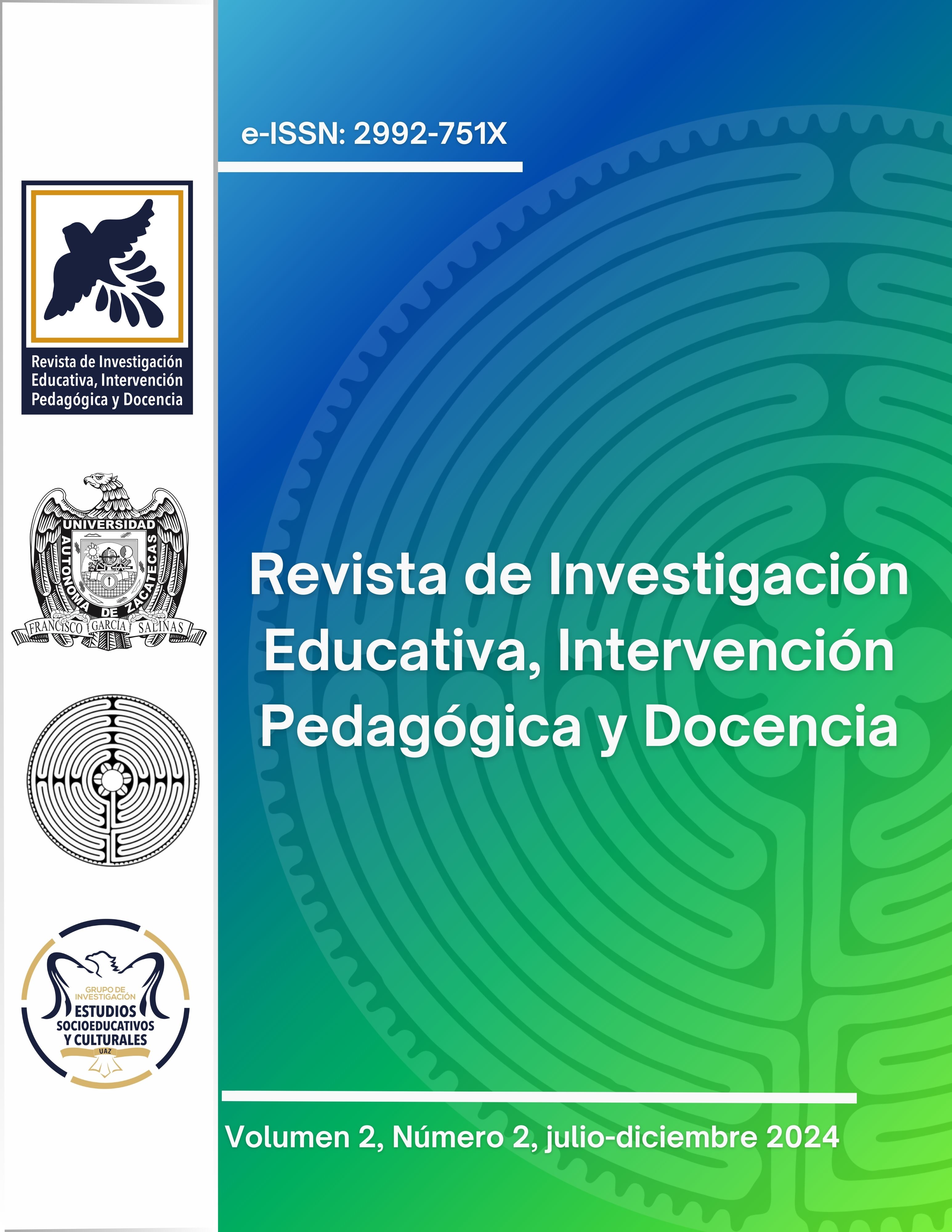Publicado 2024-07-05
Palabras clave
- números decimales,
- estudiantes normalistas,
- Enseñanza vía remota;,
- Aprendizaje constructivo;
Derechos de autor 2024 Revista de Investigación Educativa, Intervención Pedagógica y Docencia

Esta obra está bajo una licencia internacional Creative Commons Atribución-NoComercial-CompartirIgual 4.0.
Cómo citar
Resumen
El propósito del presente artículo es dar a conocer el desarrollo y los resultados de un taller realizado vía remota dedicado a ampliar los conocimientos matemáticos sobre los números decimales. El objeto de estudio e intervención fueron ocho estudiantes de segundo semestre de una escuela Normal Rural del Estado de Zacatecas, en México. Debido a la llegada intempestiva del Sars-Cov2 en 2020, la preparación de actividades presenciales se adaptó para realizarse a distancia. Se inició con la aplicación de un diagnóstico para definir los contenidos adecuados. Se utilizó la plataforma Meet, los formularios de Google, las pizarras electrónicas y los teléfonos inteligentes como principales recursos para la acción. Los resultados muestran que los participantes avanzaron en sus conocimientos y su comprensión de los números decimales, así como en su capacidad de argumentación. La interacción y construcción social de los conocimientos fueron posibles a pesar del distanciamiento físico gracias a la permanente solicitud de comparar y justificar las respuestas de los distintos estudiantes utilizando los medios disponibles.
Descargas
Referencias
- Ávila, A. (2008). Los profesores y los decimales. Conocimientos y creencias acerca de un contenido de saber cuasi invisible. Educación Matemática, 20(2), 5-33. https://www.scielo.org.mx/pdf/ed/v20n2/v20n2a2.pdf
- Ávila, A. y García, S. (2008). Los decimales: más que una escritura. México. INEE. https://www.inee.edu.mx/wp-content/uploads/2019/01/P1D402.pdf
- Ball, D., Hill, H., y Bass, H. (2005). Knowing mathematics for teaching: ¿Who knows mathematics well enough to teach third grade, and how can we decide? American Educator, 29(1), 14-46.
- Ball, D. (2017). Uncovering the special mathematical work of teaching. En Proceedings of the 13th international congress on mathematical education (pp. 11-34). Springer, Cham.
- Barriendos, A. (2019). Enseñar los números decimales en la primaria: Una ingeniería didáctica para maestros [Tesis de Doctorado en Pedagogía, UNAM]. Archivo digital. https://ru.atheneadigital.filos.unam.mx/jspui/handle/FFYL_UNAM/844
- Brousseau, G. (1981). Problèmes de didactiques des décimaux. Recherches en Didactique des Mathématiques Grenoble, 2(1), 37-125.
- Centeno, J. (1997). Números decimales ¿Por qué? ¿Para qué? Madrid: Editorial Síntesis.
- Freudenthal, H (1983). Didactical Phenomenology of Mathematical Structures. Dordrecht: Reidel. 1 traducción de Luis Puig, publicada en Fenomenología didáctica de las estructuras matemáticas. Textos seleccionados. CINVESTAV.
- Hill, H., Ball, D., y Schilling, S. (2008). Unpacking pedagogical content knowledge: Conceptualizing and measuring teachers' topic-specific knowledge of students. Journal for research in mathematics education, 39(4), 372-400.
- NCTM (2008). Maze playing board. Disponible en http://illuminations.nctm.org, consultada el 28 de diciembre de 2022.
- Saiz, I., Gorostegui E. y Vilotta D. (2011). Problematizar los conjuntos numéricos para repensar su enseñanza; entre las expresiones decimales y los números decimales. Educación Matemática, 23 (1), 123-151.
- Secretaría de Educación Pública [SEP] (2001). Libro de matemáticas. Quinto grado. SEP.
- Secretaría de Educación Pública [SEP] (2018). Plan de Estudios. Aritmética. Números decimales y fracciones. Licenciatura en Educación Primaria. SEP.
- Shulman, L. (1987). Knowledge and teaching: Foundations of the new reform. Harvard educational review, 57(1), 1-23.
- Steinle, V. y Stacey, K. (2004). Persistence of decimal misconceptions and readiness to move to expertise. In M. J Holnes y A. B. Fuglestad (Eds.), Proceedings of the 28th PME International Conference, 4, 225- 232.
- Widjaja, W. Stacey, K y Steinle V. (2008), Misconceptions about Density of Decimals: Insights from Indonesian Pre-service Teachers. Journal of Science and Mathematics Education in Southeast Asia. 31 (2), 117- 131.


